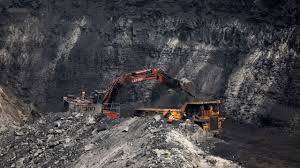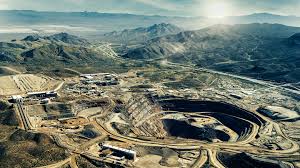India’s coal mines now yield not just coal, but also precious Rare Earth Elements (REEs) – and that too from waste, i.e. overburden. Under the new guidelines of the government, the search for REEs is now in full swing in mines across the country. This step has been taken under the National Critical Minerals Mission (NCMM) to make India self-sufficient in strategic minerals.
What are Rare Earth Elements and why are they important?
REEs, i.e. rare earth elements, are minerals that play an extremely important role in areas such as high-tech industry, defense equipment, electric vehicles, batteries, and semiconductors. Today, China produces 60% of the world’s REE magnets and dominates 90% of the processing. India, which was till now dependent on imports for these minerals, is now taking a big step towards finding them from domestic sources.

Big revelation from SCCL mines
N Balaram, chairman and managing director of Singareni Collieries Company Limited (SCCL), told CNBC-TV18 that a study conducted by the government-owned Non-ferrous Materials Technology Development Centre (NFTDC) revealed that about 1 kg of scandium and strontium can be extracted from just 15 tonnes of clay in two large open-cast mines – Satupalli and Ramagundam – in Andhra Pradesh and Telangana.
The supply of REEs is going to start from August 2025 from these two mines.
Where are REEs used?
Scandium is used in aircraft parts, fuel cells and high-performance sports goods.
Strontium is used in alloys, ferrite ceramic magnets, medicines, vacuum systems and cathode-ray tubes.
Every mine will be tested – treasure will come out of waste
From this month, the government has ordered mines across India to test for REEs in their dumps, tailings, overburden and rejects (which are considered waste after the mining process). Earlier in February 2025, the government had made it mandatory that if any critical minerals are present even in minor mineral leases, then their information should be given.
Why is this initiative necessary?
At present, India has REE deposits of 6.9 million tonnes, which ranks third in the world. China (44 million tonnes) is at number one and then Brazil. Apart from this, according to an EY report, India has one-third of the total sand mineral deposits of the world – which can become another source of REEs.
Government’s strategy – not just mining, but also refining and recycling
The aim of NCMM is not just to find minerals, but to create a complete value chain – from discovery to purification and end use. Recently, Coal and Mining Minister G. Kishan Reddy held a meeting with Heavy Industries Minister HD Kumaraswamy, officials of the Steel Ministry and Department of Atomic Energy to discuss ways to strengthen this supply chain.

Along with this, India has started looking for alternative supply sources from countries like Australia, Brazil, Argentina and Chile, so that dependence on China can be reduced.
Petroleum sector also included
The government does not want to be limited to just coal or mineral mines. Now REEs will also be tested in the waste of the petroleum sector i.e. drilling rejects etc., so that every possible source can be used.
Change in the definition of minor minerals
Earlier, minerals like Quartz, Felspar, and Mica were considered minor minerals and their leases were also given on that basis. But no one paid attention to the REEs present in them. Now the government has put them in the category of Major Minerals so that the critical minerals present along with them can also be explored and extracted.
Conclusion:
India is no longer dependent only on traditional minerals like coal or iron ore. It is now engaged in extracting treasure from its waste – and this change can make it a big player in the global REE market. When supplies start from Sattupalli and Ramagundam in the coming months, the world will realize India’s new power – scandium and strontium hidden in the soil.
This initiative can prove to be a milestone not only towards self-reliance, but also towards making India a strategic global player.
